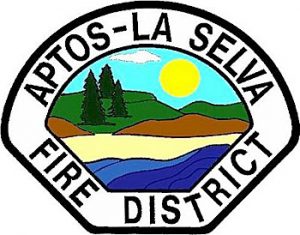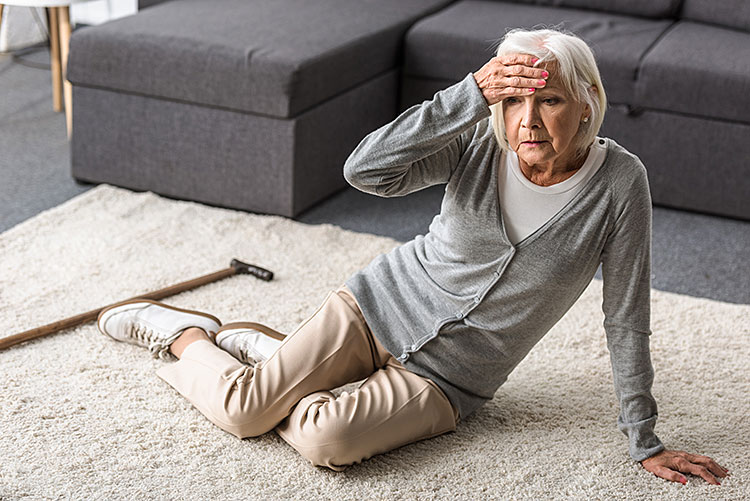By Ryan Peters, Captain Aptos/La Selva Fire District
In this month’s column, as the rain pours down, I feel it’s a good time of the year to discuss falls and fall prevention among older adults. Our crews at Aptos/La Selva Fire District regularly receive 911 calls for aging adults who are the victim of ground level falls. Most of these falls occur somewhere within what should be the safest place for all of us, our homes.
 According to the CDC, one in every three adults over the age of 65 will suffer some kind of ground level fall this year. Thirty percent of these incidents result in moderate to severe traumatic injuries. In 2014, 28.7% of older adults reported falling at least once in the preceding 12 months. This resulted in an estimated 29 million fall incidents during that year.
According to the CDC, one in every three adults over the age of 65 will suffer some kind of ground level fall this year. Thirty percent of these incidents result in moderate to severe traumatic injuries. In 2014, 28.7% of older adults reported falling at least once in the preceding 12 months. This resulted in an estimated 29 million fall incidents during that year.
Many of these incidents result in injuries to the head, neck, back, pelvis and extremities. Locally, half of all trauma related ambulance transports to the hospital were fall related while nearly three quarters of all trauma related hospital admissions were fall related.
Of course not all of these fall incidents lead to a trip to the emergency room or an extended stay in the hospital, but many do directly compromise that individuals ability to maintain independence and mobility. Something we all take very seriously as we get older.
Our crews respond daily to fall incidents. We see on a regular basis the effect a serious fall can take on an individual and their family. The good news is that falls among our aging relatives is largely preventable. There are many steps we can take within the homes of our loved ones to decrease the risk of dangerous falls.
As first responders we develop a keen eye for conditions or items within a home that drastically increase the likelihood of a fall. Our organization has taken an active role in working with other healthcare providers to assist in fall prevention. In doing so, we would like to offer you some helpful tips and resources of which you can use to keep your family safe, protected, and independent for years to come.
From the National Council on Aging:
Some of the most common risk factors for falls are a decline in balance and gait. How steady is your loved one while walking and moving about the house? Decreased vision as we get older can increase the risk of falls. Make sure your loved one can properly see while taking care of everyday activities.
In addition, be sure to have adequate lighting including night lights illuminating stairways, hallways and dark areas for nighttime operations. A flashlight easily reached on the nightstand is a great tool to alleviate anxiety and light up their environment before that trip to the bathroom.
Make sure to be diligent and confirm that the medications they take daily are not creating nor contributing to increased dizziness or dehydration both of which can lead to falls.
This is a big issue we see as first responders. Many folks take multiple medications on a daily basis. Be sure to discuss with the physician or pharmacist whether or not these medications are safe to take together.
Enlist your older relatives support in taking simple steps to stay safe. Have a discussion with them to identify any concerns they may have about ground level falls. Create a plan to mitigate risk factors within their home.
Take some time to notice if they try to hold onto walls (or you) while trying to get up from bed, or if they need to place their hands on furniture or countertops to steady themselves while walking. If they seem unsteady, discuss this with them and their healthcare provider.
Lastly, do a walk through safety assessment of the home. 911 providers can attest to the fact that many older fall victims fall as a result of stairways, throw rugs, poor lighting, poorly lit or slippery porch steps, lack of handrails, wet bathroom floors and shower stalls, along with bath tubs requiring a high step to enter.
These are all watch out items needing to be addressed when improving home safety for yourself or your relatives.
A safe home for older adults is key. Being independent and mobile into our later years is crucial to our well-being and enjoyment of life as we age. If you have an older adult in your family who is at risk for falling, or if you are concerned about your own fall safety, feel free to contact the following resources for help and information:
•••
The Senior Network Services Providing local senior citizens with information, guidance, and assistance. (831) 462-1433 www.seniornetworkservices.org
Helping Hands of Santa Cruz County/Senior Home Repair Provides affordable and simple home repair specifically addressing fall prevention. (831) 427-5070 www.scvolunteercenter.org

